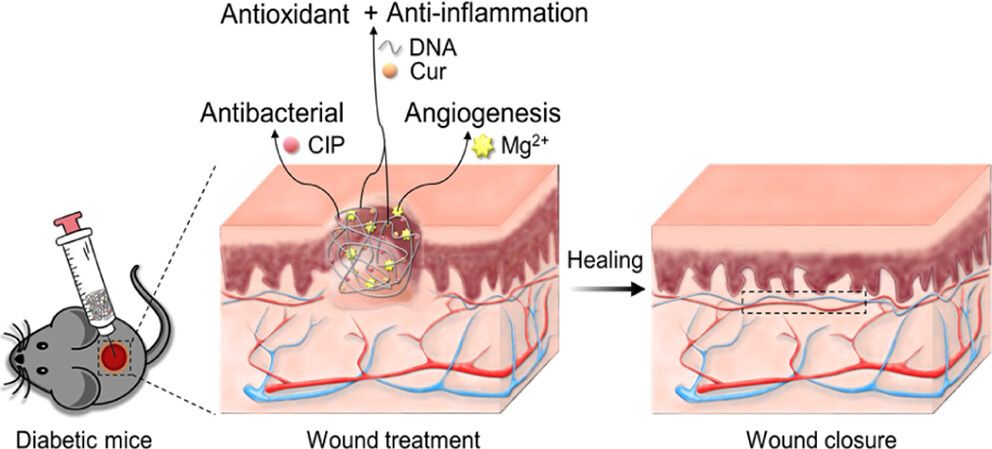
Abstract
Despite considerable progress in promoting infected diabetic wound healing, the complex pathological characteristics urge the development of injectable supersoft hydrogels with synergistic antibacterial, antioxidant, anti-inflammatory, and angiogenic functions. Herein, we propose a versatile strategy for preparing injectable supersoft DNA hydrogel dressings to promote the healing of bacteria-infected diabetic wounds. These hydrogels were formed through the coassembly of DNA chains and magnesium pyrophosphate (Mg2PP) during the rolling-circle amplification (RCA) process, followed by subsequent loading of the antioxidant curcumin and antibiotic ciprofloxacin through specific intermolecular interactions between DNA and drugs. The hydrogels can not only avoid the abrupt drug leakage and unpredictable pharmacokinetics compared to conventional in situ formed injectable hydrogels but also inhibit bacterial growth with significantly reduced antibiotic dosage. More importantly, the hydrogels scavenge a broad spectrum of reactive oxygen species (ROS) and modulate the inflammatory wound microenvironment via the synergistic effects of DNA and curcumin. In addition, the wound microenvironment facilitates the release of magnesium ions from the DNA hydrogel dressing, which in turn further accelerates the skin angiogenesis. To the best of our knowledge, this work represents a novel injectable DNA hydrogel dressing for effective management of infected diabetic wound regeneration, which can be extended to prepare a wide range of multifunctional injectable DNA hydrogels for biomedical applications.
文章链接:Chemistry of Materials 2023